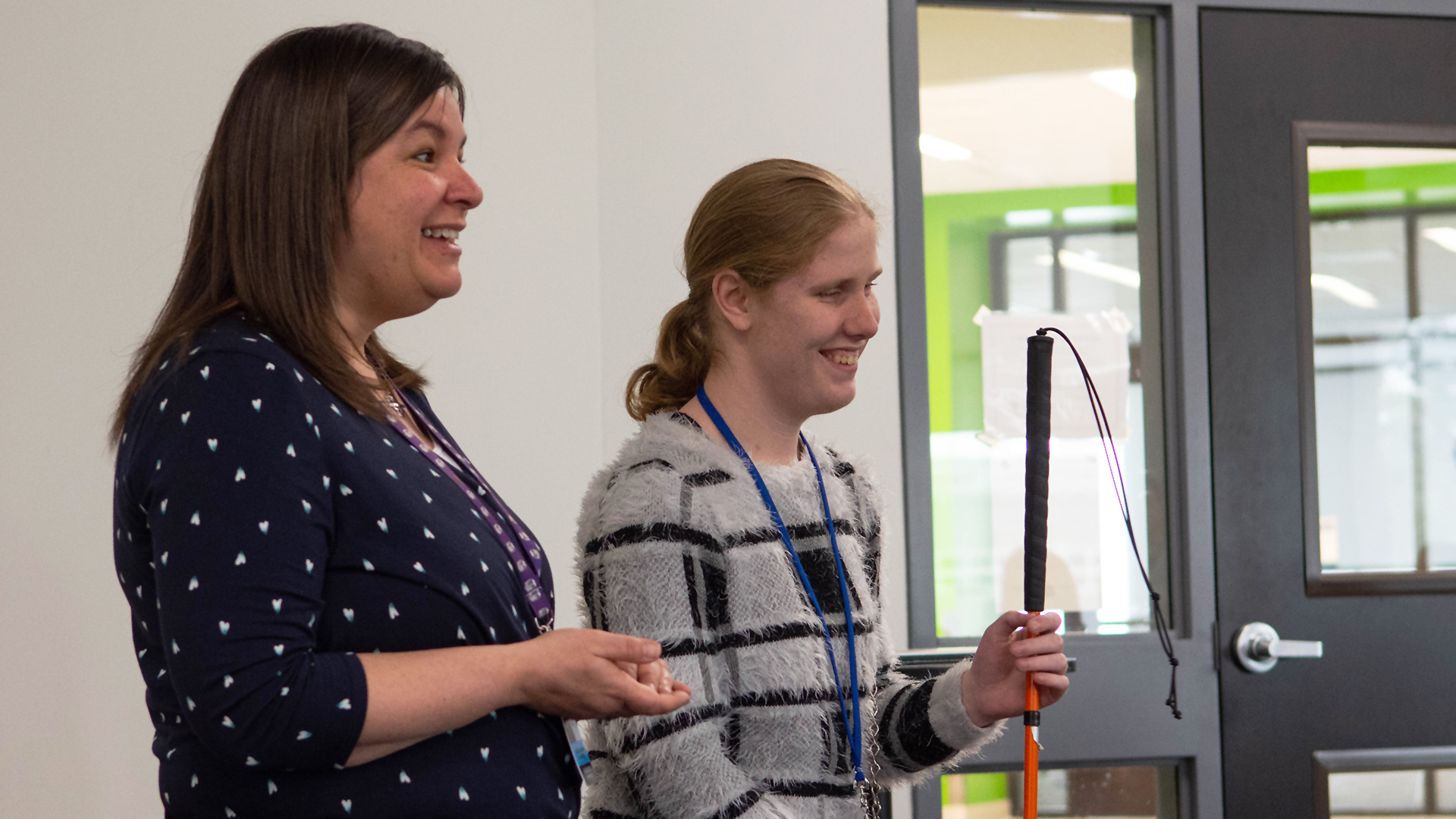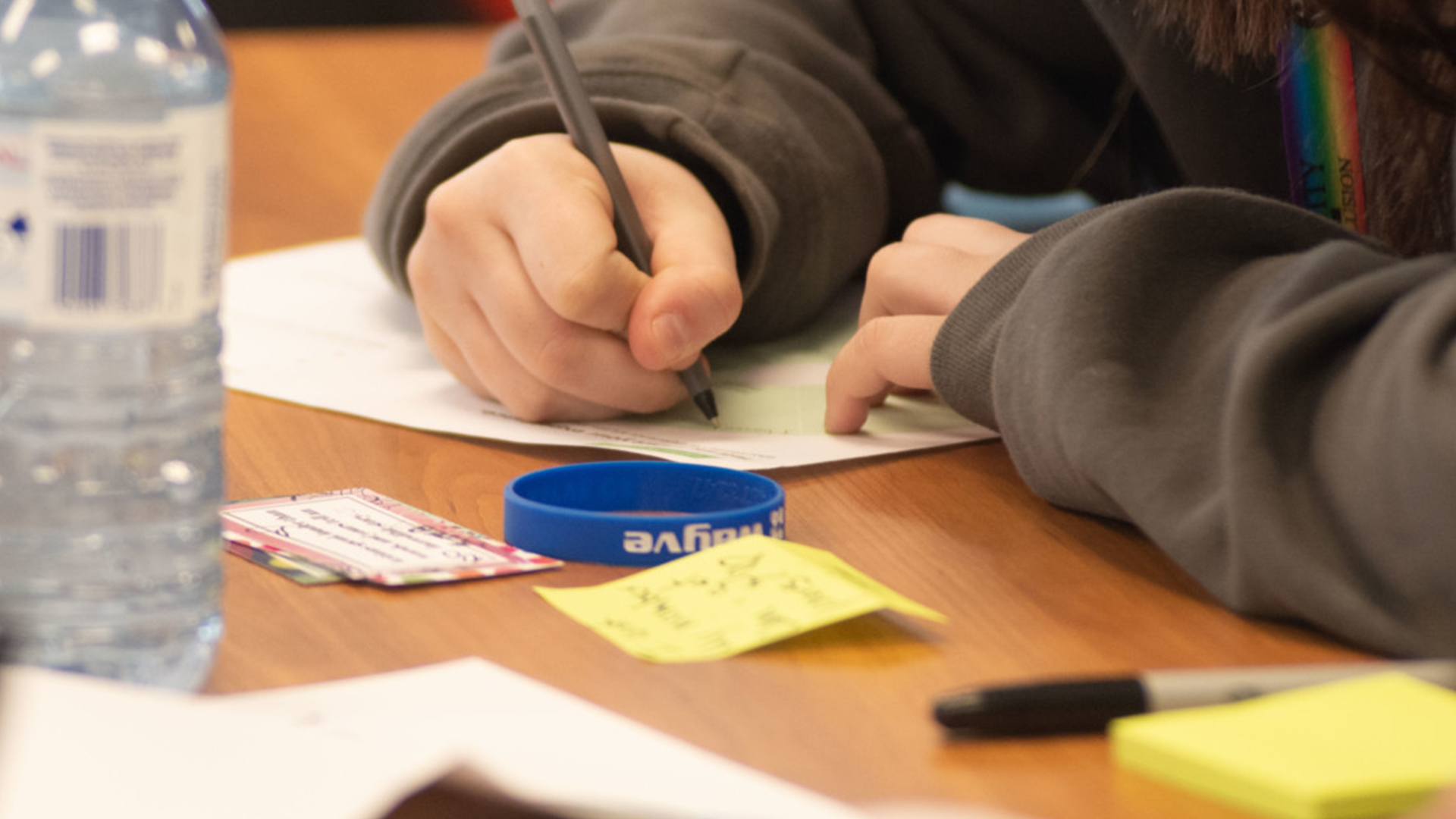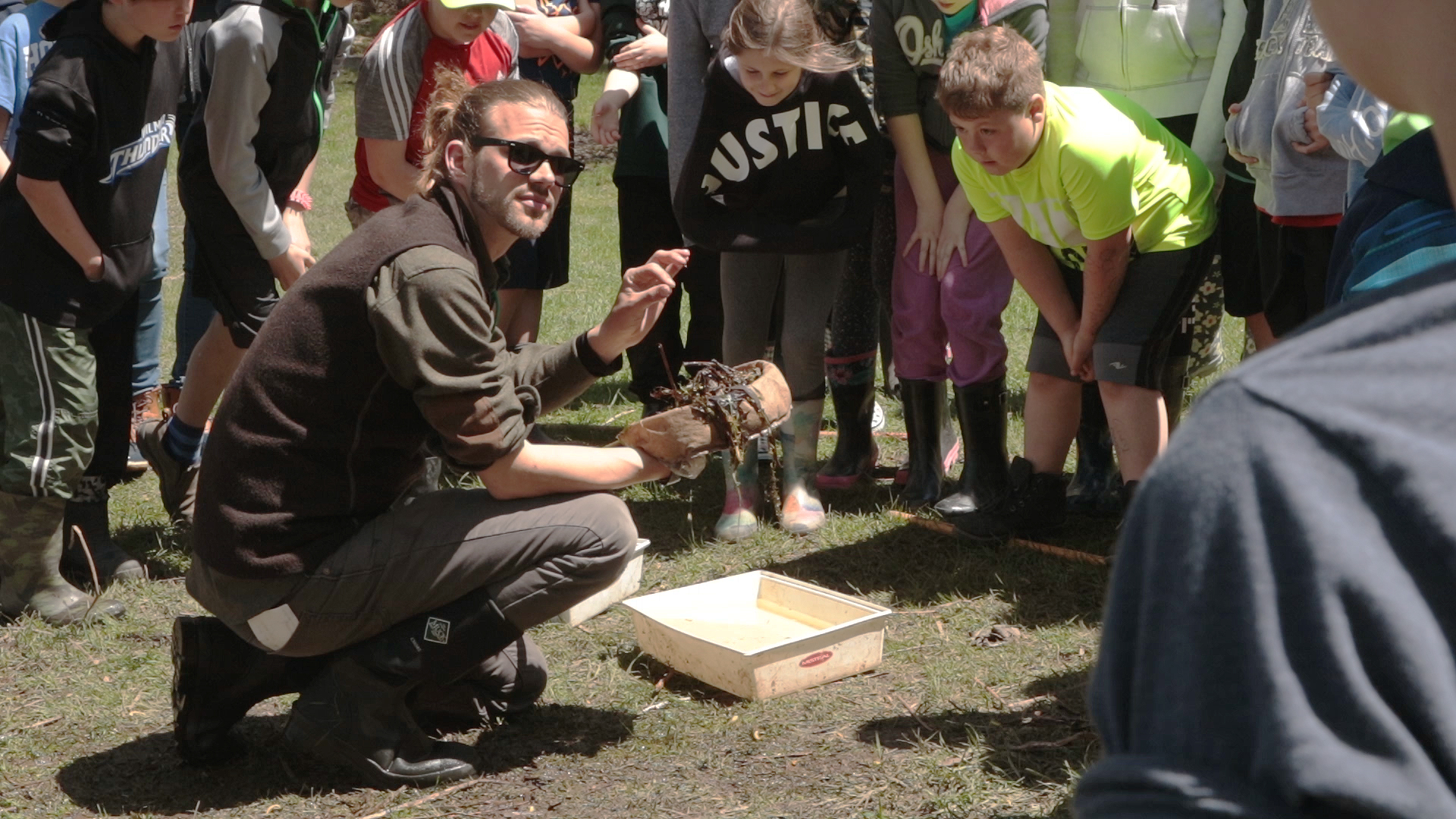
Ed Centre Staff Gain a New Perspective on Familiar Territory
Staff at the Education Centre gained a new perspective on familiar territory on May 9 as they took part in sighted guide training. About 40 Waterloo Region District School Board staff members joined Alyssa Clelland, a blind student at W Ross Macdonald School on a co-op placement at the Education Centre, and Jeanette Dudley, an orientation and mobility instructor, from Vision Loss Rehabilitation Ontario, to learn how to act as a guide for a person who is blind.
“Voices get confusing,” said Clelland, as she explained the first step to guiding someone should always be to introduce yourself. Next, the person you are guiding will hold onto your elbow with a c-grip, and walk about a step behind the guide. This is important, explained Clelland, because it means “you can have enough time to react.”
Clelland and Dudley also explained some wrong ways to guide a person who is blind. Holding their hand, grabbing their arms or pushing from behind, are all methods that should be avoided. “Now you know what the proper method is, so you don’t get in those embarrassing situations,” said Clelland with a laugh.
Language is another potential pitfall when it comes to guiding a person who is blind. Clear and regular communication is key to ensuring that the person who is being guided navigates safely. “When you’re guiding, there should be no surprises,” said Dudley. “You’re not going to say ‘the door is over there,’” added Clelland. “I don’t know where over there is.” Don’t be afraid of using certain words when talking with a person who is blind. “You don’t have to change your vocabulary,” Clelland said, adding that you can use words like “look” and “see” without worrying about insulting anyone.
Participants in the training were then invited to partner up, and practice being a guide and being guided. To help add an element of realism, those who were being guided donned blindfolds and were given a cane to help them navigate. The route took them across the Ed Centre, up the stairs and into the cafeteria. Navigating the stairs while guiding involves an increased level of communication and an adjusted position, that allows the person who is blind to firmly grasp the railing while they hand their cane to the guide.
Thanks to the thorough training received, all participants made it safely through the route. Clelland and Dudley then led a debrief, to hear feedback from participants. “Nerve-wracking,” said one person of the experience of being guided. “Their life is in your hands.” Another noted how much they appreciated having the railing when navigating the stairs. Lynsey Slupeiks, communications officer at the Ed Centre, pointed out participants had the benefit of navigating in a space they are familiar with. Being outside in an unfamiliar environment would prove a much more terrifying experience. “I can’t imagine what that’s like,” Slupeiks added.
The importance of the cane became immediately clear for nearly all participants in the training. “I like it because I had a sense of control,” said Lisa Hagen, supervised alternative learning secretary. Kylie Penticost, communications officer, noted the changing surfaces can make navigating with the cane challenging. Clelland explained she uses a longer cane than others might, as it provides more reaction time before reaching an obstacle. “I have three steps to react to it, as opposed to half a step.”
As the event came to a close, Clelland took the time to make her appreciation known. “I’m glad you guys came because it means a lot to me and a lot of other people that we’ve not met yet,” she said with a smile. “It’s good to have this skill because you never know when you’ll need it.”



